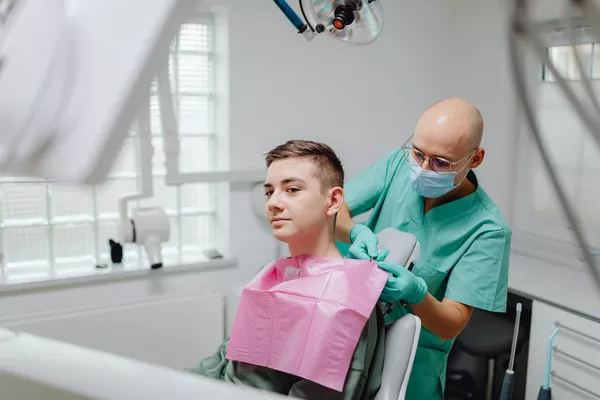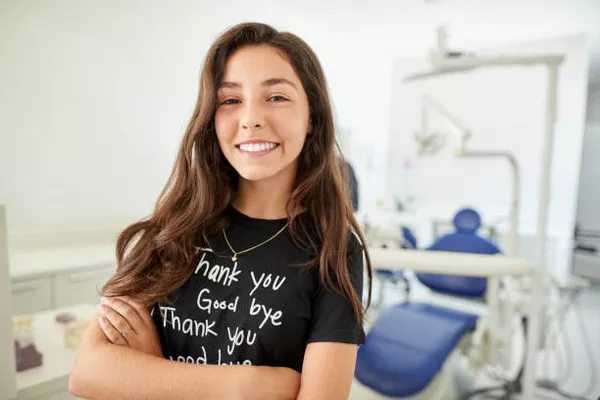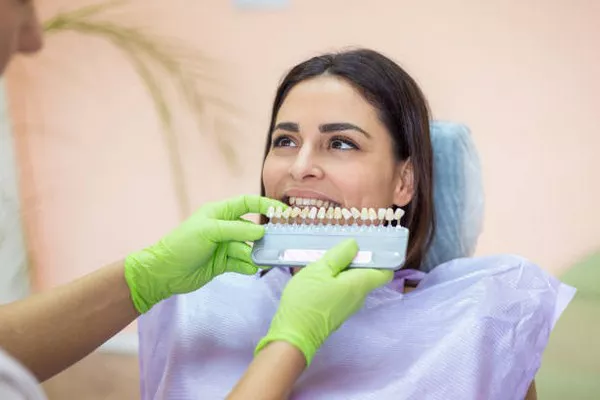Want to correct?
First find out how your teeth move!
Keep your eyes open!
The whole article is the point!
Today’s science is the principle of orthodontics!
Students, see is to learn ah ~ why the tooth can move the position of the tooth can be moved after the force, when the orthodontic tooth moves in the alveolar socket, it will not cause pathological damage to the tooth itself and its supporting tissue, but approximate physiological tooth movement, what is the reason for this?
I think the answer lies in the biology of tooth movement.
The biological principle of tooth movement can be studied from four aspects: the plasticity of alveolar bone, the compressive resistance of cementum, the stability of periodontal environment and the tissue remodeling of teeth after stress.
Plasticity of alveolar bone The plasticity of human bone tissue is great, and it also has strong adaptability, and alveolar bone is the most active part of human bone metabolism and reconstruction.
Remodeling involves two processes, proliferation and absorption, which are in a dynamic equilibrium state, which is the biological basis of orthodontic treatment.
The compression resistance of cementum in the same orthodontic force, the alveolar bone gradually absorbed, and cementum is not absorbed or only a small amount of superficial cementum absorbed.
The main reason for the absorption tolerance of cementum is that the surface of tooth root is always covered with a thin layer of cementoid without calcification, which is more resistant to pressure absorption than alveolar bone, and has a protective effect on deep cementum.
The cellular components of the periodontal membrane include synthetical cells (osteoblasts, osteocytes, and cementoblasts) and absorbent cells (osteoclasts, fibroclasts, and cementoblasts), as well as undifferentiated mesenchymal cells.
Under the condition of ensuring normal periodontal blood circulation, the existence and differentiation of various cells, through the regulation of the nervous system, various cellular active factors and activation and participate in its tissue remodeling activities.
Remodeling of teeth after stress includes five aspects: periodontal membrane reaction, alveolar bone remodeling, root resorption, pulp reaction, and temporomandibular joint remodeling.
The periodontal membrane reaction under the action of the appropriate orthodontic force of the tooth, the periodontal membrane cell component increases, and can differentiate into osteoblasts and osteoclasts.
On the traction side of the periodontal membrane, osteoblasts proliferated in large numbers, and new bone tissues were generated and deposited along the alveolar bone.
On the compression side of the periodontal membrane, a large number of osteoclasts gather and make alveolar bone resorption.
During the reconstruction process, the fibers of periodontal membrane were degraded and proliferated, and changed with the effect of tensile force.
It is this reaction of the periodontal membrane that allows the tooth to move and regain stability.
¢Æ Reconstruction of alveolar bone The reconstruction of alveolar bone can be divided into the changes of pressure side and the changes of tension side.
The changes of the pressure side: under the appropriate force, the bone resorption of the pressure side was direct bone resorption;
When the force is too large, bone resorption is indirect absorption.
The activity of osteoblasts on the lateral surface of the tooth creates new bone as the tooth moves, thus maintaining the normal thickness of the alveolar bone.
Tension side changes: The medial surface of alveolar bone is induced by the traction of periodontal membrane fibers, resulting in vigorous osteogenic activity and the generation of a large number of new bone trabeculae.
The new trabeculae line up equally with the periodontal fibers in the direction of the corrective force, forming “transitional bone” that will transform into normal alveolar bone tissue once the tooth stops moving.
¢Ç Root resorption A small amount of root resorption in the process of orthodontic treatment can often be routinely repaired after the completion of orthodontic treatment, which can be regarded as an inevitable process of normal tissue change in the process of tooth movement.
































